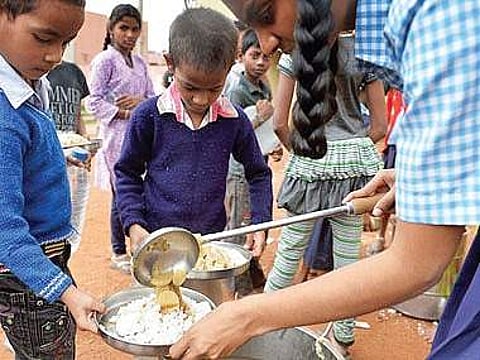

NEW DELHI: A total of 72 per cent children who availed mid-day meals in government schools said they could concentrate better on studies after meals while 87 per cent children said they liked the taste of the food provided under the scheme. These are some of the findings of an evaluation by the Hyderabad- based National Institute of Nutrition across 70 districts in 20 states and Union territories in 2017-18, commissioned by the Union HRD Ministry.
The draft report, which has been submitted to the ministry, also says that 92 per cent children going to government schools are benefitting from mid-day meal while 80 per cent of the parents surveyed agreed that the scheme has improved enrolment as well as attendance of children. The study, however, pointed out that only 58 per cent of the students who ask for second helping get it. “This evaluation was carried out with a view to assess the present status of the scheme in our schools and will help us make the required policy changes for strengthening the programme,” a senior official said.
The evaluation, which has called the implementation of the scheme “largely successful”, is in stark contrast to several CAG reports that have raised question marks over the execution of the mid-day meal scheme. A CAG report tabled in Parliament in early 2017 had raised red flags such as over-reporting of enrolment figures, financial indiscipline, poor quality of meals and inadequate meals.
“The quality of food served in schools under the scheme continues to remain poor across the country,” the report said. “Cases of cooking of poor quality meals in unhygienic conditions, inadequate and poor quality of infrastructure in terms of kitchen sheds and utensils were rampant across all states, exposing children to health hazards.” Launched in August 1995 to boost primary education by increasing enrolment, retention and attendance, simultaneously impacting on the nutrition levels of children, the scheme was extended in 2008-09 to students of upper primary classes.